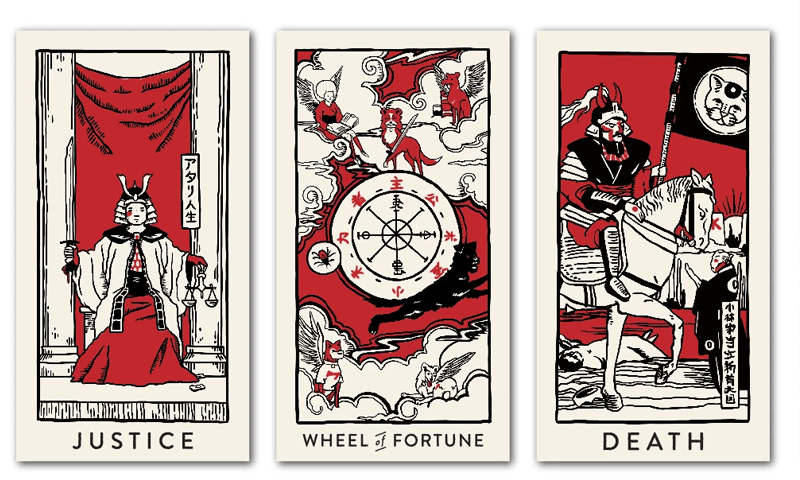Like in any traditional tarot reading, the Yes or No tarot requires you to prepare yourself, your intentions, and questions. Remember to formulate questions that are specific, and answerable by yes or no. After you have formulated a question, draw the number of cards depending on the tarot spread you will do. Like any tarot reading, there are different tarot spreads to choose. If you are interested in doing a yes or no tarot reading, here are the different tarot spreads you can do.
FOR A ONE-CARD DRAW
- One-Card Draw: Assigning a Yes, No, or Maybe
This method involves using your judgment and interpretation in assigning a yes, no, or maybe to each tarot card. Based on the image and feelings that you get from each card, you need to assign a yes, no, or maybe. When assigning each card with an answer, here are the steps for you to follow:
- Formulate your question.
- Gather your deck and go through each card.
- Based on the image, and your intuition, assign a yes, no, or maybe to each card.
- Separate the cards into three groups depending on its assigned answer.
- Regroup the cards into one deck.
- Shuffle the deck.
- Draw the card.
To make it easier for you to remember, you can list down the assigned answer of each card. For example, in the Major Arcana, the Devil Tarot Card looks and feels like an immediate No, the Strength Tarot Card looks and feels like a safe Yes, and the Tower Tarot Card is a Maybe. On the other hand, for the Minor Arcana, the Nine of Pentacles is a Yes, the Six of Pentacles is a resounding no, while the Seven of Pentacles can be a Maybe. Ultimately, it is you who must decide the answer to each card. Do not think too hard, and remember to have fun.
- One-Card Draw: Upright vs Reversed Method
Perhaps the most basic and simplest way of doing a Yes or No Tarot Spread is through the Upright vs Reversed Method. For you to use this method, here are two procedures you can choose from:
Procedure # 1:
- Formulate your question.
- Browse through your cards and make sure that these are all upright.
- Shuffle the deck
- Cut the deck into two equal groups.
- Take one group and turn it upside down.
- Regather the cards.
- Reshuffle the deck.
- Draw one card.
Procedure # 2:
- Browse through your cards and make sure that these are all upright.
- Shuffle the deck.
- Turn the cards face down.
- If your deck contains 78 cards, randomly choose 39 cards and turn it upside down. While you are doing this, make sure that the cards are still faced down.
- Reshuffle the deck.
After doing one of the two procedures, you can now draw a card. If the card is in an upright position, then it is a Yes. While if it is in a reversed position, it is a No. Again, it is your choice in determining what position is a yes or no. Do remember to ask your question before doing this method.
FOR A FIVE-CARD SPREAD
MAJORITY RULES
As the name states, the most number of yes or no answers will determine your answer. In this method, you can determine the answer either through the Upright vs Reversed Method or by assigning a yes or no to each card. To give you a clearer example, here is how to do it:
- Five Card Spread: Upright vs Reversed Method
Follow the procedure in the One-Card Draw for the Upright vs Reversed Method, but this time you need to draw five cards and do the following steps:
- Asking the same question, draw one card at a time in a face-down position.
- Lay the cards next to each other still in a face-down position.
- After drawing the five cards, turn each card face-up.
- Take a look and interpret the results. If the majority is upright, then your answer is yes. If the majority are in reverse, then the answer is no.
- Five Card Spread: Assigned Yes or No Method
Follow the procedure in the Assigned Yes or No Method, but this time draw five cards and do not assign a Maybe to any card. Then, arrange the cards in the same pattern as shown in the Five-Card Spread: Upright vs Reversed Method. With regards to the interpretation, the majority will determine the answer.
FOR A THREE-CARD SPREAD
MAJORITY RULES
Alternatively, you can use this method using only three cards. The method and the interpretation are the same, but this time, you only need to draw three cards.
KEEP IN MIND
Compared with the traditional tarot reading, the answers you will receive from the Yes or No Tarot is limited. Before you act on the answers you receive, be sure to think twice as to how the answers can affect you in the long run. Remember that the tarot is only a guide to your concerns and questions. Ultimately, you are the one who will decide on what you think is best.
LOOKING FOR MORE INFORMATION?
What exactly is Yes or No Tarot? How can you formulate the right questions? If you are looking for a definitive guide to this kind of tarot, then click this link, online tarot reading. The guide will explain to you how to do the Yes or No Tarot correctly. The website contains different spreads and ways on how to interpret the Yes or No tarot. It also has a list as to whether the card is a yes or no, and not only that, each yes or no answer has a small explanation to help avoid confusion.



















